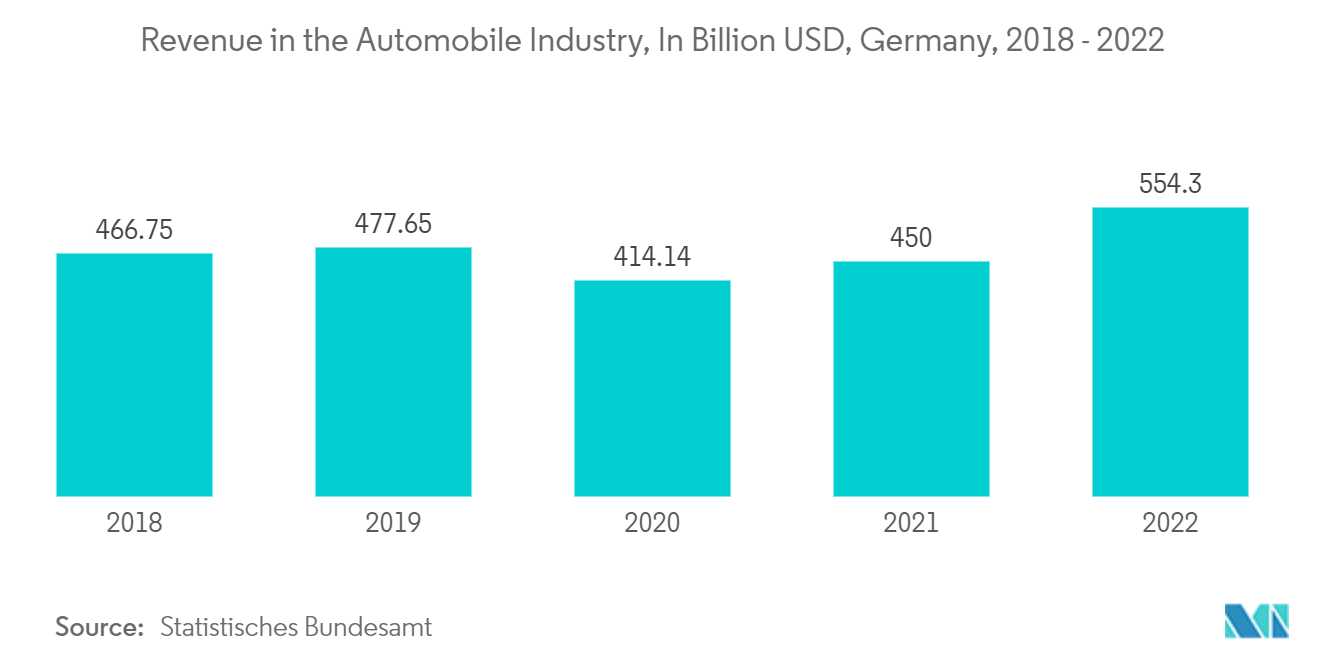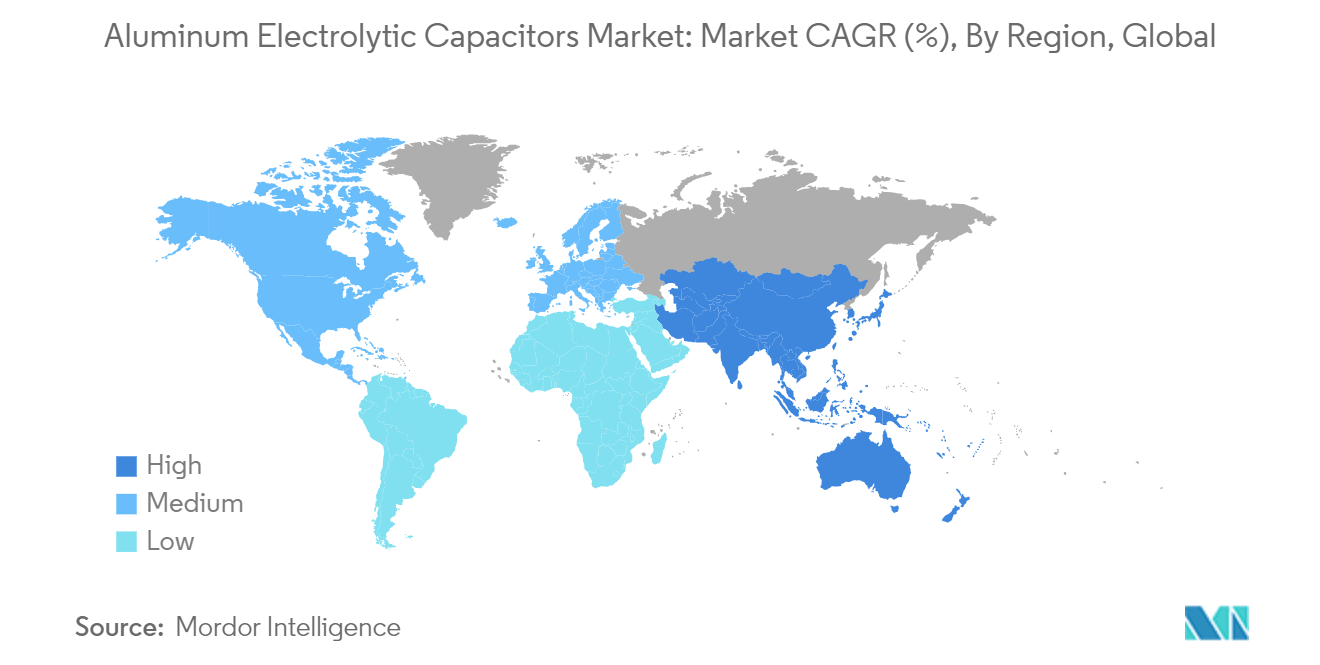Market Trends of Aluminum Electrolytic Capacitors Industry
Automotive is Expected to Hold Significant Market Share
- The new automotive features and functionality due to autonomous vehicle technologies, vehicle-to-vehicle (V2V) communications, advanced driver-assistance systems (ADAS), and other safety and sensing systems, like backup cameras and lane-departure detectors, are driving the demand for aluminum electrolytic capacitors in automotive applications.
- Electric vehicles, plug-in hybrids, and other motor vehicles deploy electric drive trains. These drive trains are creating a significant demand for capacitors and subsystems. In these vehicles, aluminum electrolytic capacitors are used in drive-train applications, including boost inverters, DC/DC converters, motor inverters, onboard chargers, and wall chargers.
- Aluminum electrolytic capacitors also play a crucial role in regenerative braking systems, a technology that was employed in the popular Toyota Prius hybrid. A regenerative braking system takes the kinetic energy lost as heat when a car decelerates and turns it into electricity. This electricity can be stored for a short period of time in a capacitor before it is recycled to make the vehicle accelerate again.
- Additionally, due to the rapidly expanding market for electrified vehicles (EVs), there is a growing demand for on-board chargers (OBCs). These OBCs offer the opportunity to conveniently charge the car not only at fast-charging DC stations but also with AC sources in a timely manner. Presently, these systems can reach up to 22 kW with operating voltages of up to 800 V. It is crucial to recognize that OBCs play a vital role in enhancing the appeal of EVs.
- Considering the intricate nature of these systems, it is necessary for the OBC to have a specific amount of bulk capacitance in order to ensure stability of the DC voltage used for battery charging. Aluminum electrolytic capacitors present themselves as a favorable option in this regard, as they are capable of meeting important criteria such as having high voltage ratings of up to 500 V, offering a large capacitance of up to 820 µF, and demonstrating excellent ripple current capabilities within an operating temperature range of -40 °C to 105 °C.
- Therefore, TDK Corporation announced the new EPCOS aluminum electrolytic capacitor series B43548* with snap-in terminals. The series B43548 capacitors feature a suitable maximum ripple current capability of 9.80 A (400 V, 100 Hz, 60 °C).

Asia-Pacific is Expected to Hold Significant Market Share
- The region is also witnessing increasing investments in the market. For instance, in January 2022, Exxelia announced that it had completed the majority acquisition of Alcon Electronics. Alcon Electronics is an Indian designer and manufacturer of catalog and aluminum electrolytic capacitors, mainly serving the renewable energy, medical imaging, induction heating equipment, power generation, and railway end markets. Alcon Electronics provides a wide range of film and screw-terminal aluminum electrolytic capacitors for use in power electronic applications.
- The vendors in the region are expanding their production footprint in the region. For instance, during the pandemic, Keltron, India's first and largest electronic corporation in the state sector, announced its plan to set up a production facility for manufacturing capacitors at its center in Kannur. The facility would use the most advanced technology developed by VSSC and ISRO in aluminum electrolytic capacitor production.
- For instance, Nippon Paper Industries developed a new technology that could eventually render lithium-ion batteries useless in electric vehicles. The company hopes to develop aluminum electrolytic capacitors to store and release electrical energy more efficiently than conventional battery technology by refining wood pulp to microscopic dimensions.
- Players in the regional market have followed investment deals, including mergers and acquisitions. For instance, in March 2022, KYOCERA AVX agreed with ROHM Semiconductor to transfer all of ROHM's capacitor manufacturing units and relevant intellectual property to KYOCERA AVX, effective August, 2022.
- Further, the Japanese government aims to have all the new cars sold in Japan, be they electric or hybrid vehicles, by the year 2050. The country also plans to offer subsidies to accelerate the private sector's development of batteries and motors for electricity-powered vehicles. Japan is one of the countries that were early adopters of electric vehicles, with the launch of the Nissan LEAF and Mitsubishi i-MIEV more than a decade ago.
- During the first half of 2023, the sales of imported electric vehicles (EVs) accounted for 9% of all domestically imported vehicles sold. According to the JAIA, the total number of EVs sold during this period was 10,968, indicating a significant year-on-year increase of 94.5%.

